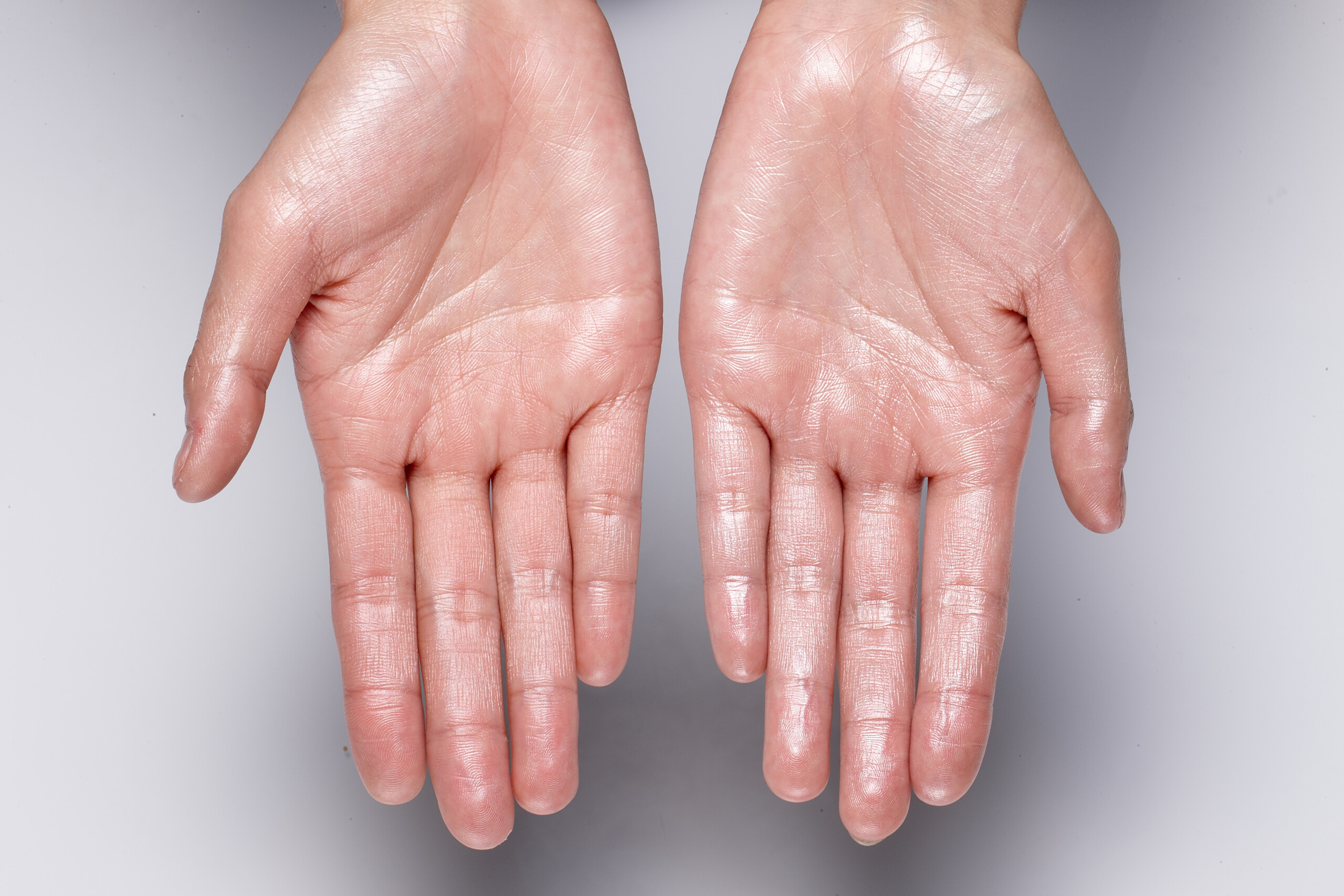Specialist Dermatology Solutions for Treatment of Hyperhydrosis of Hands: Comprehensive Overview
Specialist Dermatology Solutions for Treatment of Hyperhydrosis of Hands: Comprehensive Overview
Blog Article
Unveiling the Intricacies of Excessive Sweating: A Comprehensive Overview to Medical Diagnosis and Monitoring
Excessive sweating, clinically recognized as hyperhidrosis, is a problem that impacts a substantial number of people and can have an extensive effect on their high quality of life. While sweating is a natural bodily function, its overactivity in hyperhidrosis offers a distinct set of challenges that usually go past plain pain.

Recognizing Hyperhidrosis Causes
Hyperhidrosis creates can be associated to numerous elements such as genes, hormone inequalities, and specific clinical conditions. Genetics play a considerable duty in key focal hyperhidrosis, where individuals acquire the problem from their family members. By identifying the certain factors contributing to extreme sweating, medical care service providers can tailor therapy plans to deal with the underlying reason, supplying relief and boosting the quality of life for individuals impacted by hyperhidrosis.
Acknowledging Hyperhidrosis Manifestations

Additionally, hyperhidrosis signs may materialize in social and psychological distress, as people might feel embarrassed or anxious regarding their sweating, leading to evasion of social circumstances (Treatment for hyperhydrosis of hands). In addition, repeated episodes of excessive sweating can result in skin maceration, fungal infections, and an overall reduction in self-confidence
Diagnostic Process for Hyperhidrosis
Launching the diagnostic procedure for extreme sweating includes extensive examination of the individual's clinical history and physical exam. Making inquiries regarding the onset, period, and sets off of sweating episodes is critical to separate between primary focal hyperhidrosis and second generalized hyperhidrosis. Clinical history ought to likewise include inquiries concerning medications, clinical conditions, and family members history of hyperhidrosis.
During the checkup, specific focus is paid to the areas impacted by sweating. The doctor might evaluate the degree of sweating, check for indications of underlying problems, and review the impact of sweating on the individual's lifestyle. In addition, particular tests like the gravimetric test, starch-iodine examination, or skin conductance dimensions might be carried out to evaluate the amount of sweat produced.
Furthermore, in cases where secondary hyperhidrosis is thought, additional examinations such as blood examinations, pee i loved this examinations, and imaging researches might be suggested to determine the underlying root cause of extreme sweating. The diagnostic process aims to accurately determine the type and reason for hyperhidrosis to guide appropriate management approaches.
Therapy Options for Hyperhidrosis
When dealing with excessive sweating, numerous therapy choices are available to minimize signs and improve the person's top quality of life. The therapy approach for hyperhidrosis depends on the severity of signs and symptoms and the individual's reaction to initial therapies.
Topical treatments, such as aluminum-based antiperspirants, are frequently recommended as the first line of defense for handling mild instances of hyperhidrosis. For individuals with extra serious signs and symptoms, oral drugs like anticholinergics may be prescribed to aid decrease sweating.

Effective Monitoring Strategies
To properly take care of hyperhidrosis, a individualized and extensive therapy plan tailored to the person's specific demands and response to previous treatments is vital. Iontophoresis, entailing the use of a low electrical existing to reduce sweat gland activity, can be helpful for both palmoplantar and axillary hyperhidrosis. A multidisciplinary approach involving skin specialists, key care doctors, and, if needed, doctors, can optimize the management of hyperhidrosis.
Conclusion
In conclusion, hyperhidrosis is a condition characterized by excessive sweating, which can greatly impact look what i found a person's high quality of life. With appropriate diagnosis and monitoring strategies, people experiencing from hyperhidrosis can discover relief and boost their general well-being.
Excessive sweating, clinically recognized as hyperhidrosis, is a condition that affects a significant number of people and can have an extensive influence on their high quality of life. By determining the specific variables contributing to excessive sweating, medical care service providers can customize treatment strategies to attend to the underlying cause, supplying relief and boosting the high quality of life for people impacted by hyperhidrosis.
Hyperhidrosis, characterized by too much sweating past what is necessary for managing body temperature, can significantly influence an individual's top quality of life. Asking about the beginning, duration, and activates of sweating episodes is crucial to set apart between key focal hyperhidrosis and additional generalised hyperhidrosis. Treatment for hyperhydrosis of hands.In conclusion, hyperhidrosis is a problem identified by extreme sweating, which can considerably influence a go person's top quality of life
Report this page